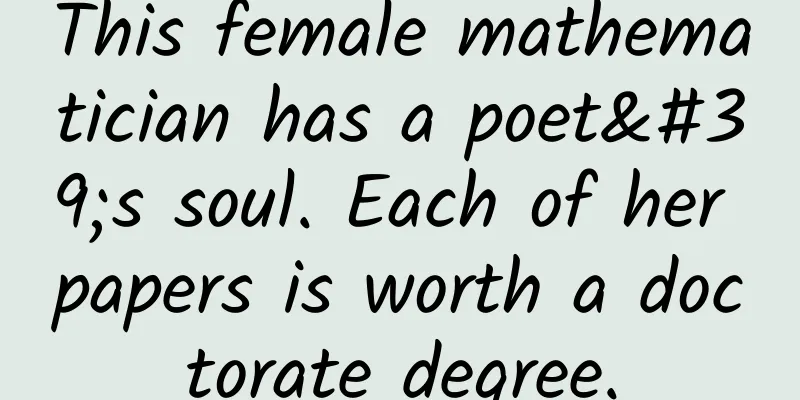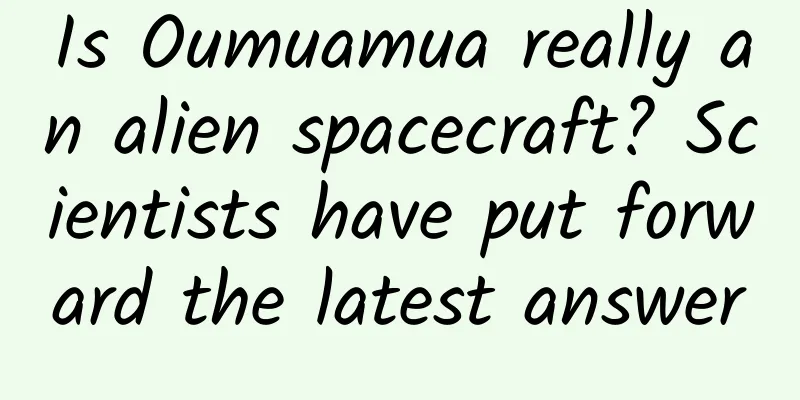This female mathematician has a poet's soul. Each of her papers is worth a doctorate degree.

|
“It is impossible to be a mathematician without having the soul of a poet.” ────Sofya Kovalevskaya Written by Chen Guanrong (City University of Hong Kong) Figure 1 Sofia Kovalevskaya and her signature Sofya Vasilyevna Kovalevskaya (January 15, 1850 - February 10, 1891) was the first female doctor of mathematics, the first female professor of mathematics, and the first female academician of the Academy of Sciences. 1 Childhood: The "New Pythagoras" Sophia was born in Moscow, Russia on January 15, 1850. Her father, Vasily V. Korvin-Krukovsky (1801-1875), was a descendant of Hungarian King Matthias Korvin (1443-1490). He was a lieutenant general in the Russian Army and served as the commander of the Moscow Artillery. Her mother, Yelizaveta F. Schubert (1820-1879), was born into a noble family of German descent. Her grandfather's family immigrated to Russia from Germany in 1785. Her father, Theodor F. von Schubert (1789-1865), was a famous Russian astronomer, a member of the Royal Academy of Sciences, the commander of the Army Ground Service, and the director of the Peter the Great Museum. At home, Sophia had an older sister, Anyuta (1843-1887), who was 7 years older than her, and a younger brother, Fyodor (1855-1919), who was 5 years younger. In 1858, when she was 8 years old, her father retired and the family moved to a manor in the northeastern town of Palibino. When she was a teenager, Sofia was most influenced by her elder sister, Anyuta. She admired her sister very much because she knew a lot, cared about society, and was willing to talk to her. When Anyuta grew up, she became a political radical, but that is another story. Sofia's father hired several tutors to teach her English, French, German and elementary mathematics. The teacher who taught her elementary algebra and geometry was the Polish Yosif I. Malevich, who was surprised to find that the girl was particularly fascinated by mathematics. It turned out that her interest in mathematics was inspired by her uncle Pyotr V. Krukovsky in her early years. The uncle loved mathematics and told his little niece many interesting mathematical stories, such as squaring the circle, asymptotes that can be approached but never reached, etc., which made her full of curiosity and fantasy about mathematics. When Sophia's father was young, he took calculus courses taught by Mikhail V. Ostrogradsky, a royal court mathematician and a disciple of Euler. Later, when the manor house was renovated, her father used pages from the calculus textbooks of that year to cover the walls of Sophia's room as decoration. When Sophia was 11 years old, she became very interested in wallpaper and tried to figure out what those terms and symbols meant. Sophia later recalled: "When I observed the walls, I found that everything I heard from my uncle was described on them. I was very excited and began to look at the wallpapers more carefully. Although the paper was left with yellowed traces of time, I liked to observe the mysterious symbols on the paper. Even if I couldn't decipher those symbols, I believed that they definitely had some interesting and wise meanings. I often stood in front of the wall for several hours, repeatedly pondering the content printed on it." One day, a neighbor, Professor Nikolai N. Tyrtov, a physicist, gave her father a gift, a physics textbook he had written. Sophia was interested in reading it. Tyrtov noticed that when Sophia was reading the "Optics" chapter, she did not understand the meaning of the trigonometric formulas in it, but she was able to correctly explain the sine function in her own way. Tyrtov was surprised and praised her as "the new Pythagoras". Figure 2 Sophia in her teenage years 2 Ice-breaking journey to study In the Tsarist era, women were not allowed to enter institutions of higher learning, so the mathematical genius Sophia naturally had no chance. In order to receive higher education, Sophia thought of going abroad. However, single women at that time could not get passports. In 1868, 18-year-old Sophia privately made an appointment with her good friend Vladimir O. Kovalevsky (1842-1883), and the two left their parents in the name and way of "marriage" and came to St. Petersburg. Kovalevsky entered the paleontology major at St. Petersburg University. In terms of political views, he was a political radical and later translated and published Darwin's "The Origin of Species". Sophia secretly went to the university to listen to the calculus course taught by mathematician Aleksandr N. Strannoliubsky. This professor was a student of Nikolai Tyrtov, an outstanding mathematics educator, and published the first Russian algebra teaching method. His calculus course made Sophia sigh: "Mathematics has opened up a new and wonderful world for me." In 1869, the fake couple left Russia, stopped briefly in Vienna and then came to Heidelberg, Germany. At Heidelberg University, Kovalevsky registered to study biology and geography. But unexpectedly, Germany was not much better than Russia, and Heidelberg University did not allow female students to register as formal students. After much struggle, the school only allowed Sophia to audit basic courses. So Sophia went to audit the physics and chemistry courses of Hermann von Helmholtz (1821-1894), Gustav R. Kirchhoff (1824-1887) and Robert WE Bunsen (1811-1899). Sophia was particularly fascinated by the mathematics classes of Paul Du Bois-Reymond (1831-1889), especially the topic of "Theory of Elliptic Functions" by Leo Königsberg (1837-1921), a student of the famous mathematician Karl TW Weierstrass (1815-1897) who taught at the University of Berlin. After three semesters at Heidelberg University, Sophia transferred to the University of Berlin according to Konigsberg's advice. However, the University of Berlin was even worse, and even female students were not allowed to sit in on professors' lectures. Sophia was very distressed by the setbacks she faced everywhere: "The capital of Prussia is backward, and all my pleas and efforts were in vain. I was not allowed to enter the University of Berlin." Sophia was hopeless, so she went directly to the door of the respected scholar Weierstrass for help. Under the constraints of traditional concepts and rules and regulations at that time, Weierstrass was also in a difficult position, or he was unwilling to help this Russian woman whom he had never met before. Weierstrass gave her some difficult math problems as a test, intending to politely refuse. Unexpectedly, Sofia unexpectedly handed in a perfect answer sheet, and her unique thinking method and problem-solving skills surprised the professor. Weierstrass later recalled: her "intuitive ability is rare even among older and more mature students." Admission was still impossible, but Weierstrass agreed to teach her mathematics twice a week for the first time. This one-on-one mentor-apprentice teaching lasted for four years. Later, when Sophia recalled the experience of learning mathematics with the professor, she said with great gratitude: "This learning experience has a profound impact on my entire academic career. It determined my later research direction." Weierstrass also admired this special student. In a letter he wrote to her later, he said: "I have never met someone like you who has such a thorough understanding of the highest goals of science, and you are so happy to cooperate with my instructions and rules." This unusual mentor-apprentice relationship was very pleasant and fruitful for both of them. Figure 3 Weierstrass and his signature In the spring of 1871, Sophia heard that her sister Anyuta and her brother-in-law Charles Victor Jaclard (1840-1903) had gone to France to participate in the Paris Commune revolutionary movement, so she went from Berlin to Paris to visit her sister. During her stay, Sophia also volunteered to care for the wounded in the Paris Commune in the hospital. Six weeks later, Sophia returned to Berlin to continue her mathematical studies and research. In May of the same year, the Paris Commune failed and Jaclard was arrested. After Sophia knew about it, she informed her father, who was a lieutenant general in the Russian Army. Her father did not approve of his daughter's revolutionary actions, but he still went to Paris and rescued Jaclard with the help of government officials. Finally, the young couple sneaked out of Paris and went to Switzerland and London respectively. In 1874, the two returned to Russia. In 1874, 24-year-old Sophia won the doctorate degree awarded by the University of Göttingen in absentia with three papers, including "On the Theory of Partial Differential Equations", "Comments and Supplements on Laplace's Study on the Shape of Saturn's Rings" and "On the Transformation of a Class of Third-Order Abelian Integrals into Elliptic Integrals", carefully arranged and strongly recommended by Weierstrass, who had been promoted to the president of the University of Berlin. She became the first female doctor of mathematics in history. Weierstrass said that each of Sophia's papers was worth a doctorate degree. He wrote in the recommendation letter: "Among the students from all over the world, no one can currently surpass Ms. Kovalevskaya." In addition, the degree committee also received strong recommendation reports written by well-known mathematicians Bois-Reymond and Lazarus Fuchs (1833-1902). Sophia's first paper was about the general theory of partial differential equations, proving that a class of partial differential equations has a unique analytical solution under appropriate initial and boundary conditions. Later, it was learned that the French mathematician Augustin-Louis Cauchy (1789-1857) had already given a solution to the same problem in 1842, but Weierstrass and Sophia did not know his work at the time. Despite this, Charles Hermite (1822-1901) praised Sophia's paper as "the first important result of the general theory of partial differential equations", and Henri Poincaré (1854-1912) commented that Sophia "greatly simplified Cauchy's proof method and gave the final form of the theorem". From then on, there was a "Cauchy-Kovarevskaya theorem" in the field of partial differential equations, and later there were corresponding results for higher-order equations. Sophia also examined the heat conduction equation and found that some partial differential equations have no analytical solutions even if they have "formal power series solutions". Sophia's second paper was about the classical mechanics problem of rigid body rotation around the equilibrium point, including ordinary pendulums, gyroscopes and gyroscopes as special cases. At that time, mathematicians had been analyzing this type of rigid body motion for more than a hundred years, but they had not been able to solve this seemingly simple general problem, calling it a "mathematical water monster". Famous mathematicians such as Euler, Lagrange, Legendre, Poisson and Jacobi had studied two of the classical cases. Due to its importance in theory and application, the French Academy of Sciences set it as the target of the "Prix Bordin Award", but the reward was offered three times without success. Sophia's third paper discussed the relationship between Abel integrals and elliptic integrals. Later, in 1888, Sophia further developed the results of this article and solved the above-mentioned "mathematical water monster" problem by borrowing the techniques of Abel functions and elliptic integrals, and was awarded the Prix Bordin Award from the French Academy of Sciences. 3 A tumultuous academic career In 1874, after Sophia received her doctorate in mathematics, she married her husband and returned to Russia in the autumn of the same year. However, in Russia under the rule of the Tsar, no school was willing to hire her husband because of his radical political behavior, so he started a real estate business, but soon went bankrupt. Sophia herself was unable to teach at a university because she was a woman, and she could not even find a suitable job, so she had to return to her father's old estate and be unemployed. During this time, Sophia's brother Fyodor studied mathematics at St. Petersburg University, and many years later he became a professor at the Department of Physics and Mathematics of the university. Sophia then came to St. Petersburg, trying to get a position at the university or the Academy of Sciences. She began to have contact with scientists in St. Petersburg. Once, she was invited to attend a party hosted by the famous chemist Dmitri Mendeleev (1834-1907), where she met some scholars and celebrities in the fields of mathematics, biology and chemistry, especially the mathematician Pafnuty Chebyshev (1821-1894). However, Russian scientists at that time had a certain hostility towards Germany and had different views on the Weierstrass analysis school, so Sophia was not particularly welcomed. Despite this, Chebyshev invited Sophia to attend his mathematics lectures and encouraged her to consider the mathematical problems of celestial mechanics, especially the stability of Saturn's rings. Figure 4 Sofia in St. Petersburg In 1879, one of Weierstrass's Swedish students, mathematician Gösta Mittag-Leffler (1846-1927), visited St. Petersburg, where he met his junior Sophia and decided to help her find a university mathematics teaching position. Figure 5 Gersta Mitta-Leffler In 1880, at the invitation and arrangement of Chebyshev, Sophia gave a report on Abel integrals at the Sixth Congress of Natural Sciences held in St. Petersburg. In the spring of 1881, Sophia returned to Berlin with her newborn daughter Fufa. Together with Weierstrass, Sophia studied the mathematical problems of light refraction in different media. Sophia's husband stayed in Russia. However, he was very unstable due to radical ideas, and under the pressure of financial difficulties and punishment for stock fraud, he committed suicide in 1883. This unfortunate event hit Sophia hard. She interrupted her mathematical research and had to return to Russia to clear the debts left by her husband. In November 1883, Sophia came to Stockholm, Sweden from Russia. With the help of Mita-Leffler, who was the head of the mathematics department at the time, she entered the newly established Stockholms Högskola College. In order to test her teaching ability, the school let her teach for a year without a position or salary. Based on her good family foreign language education and natural language skills when she was a child, she quickly learned Swedish, and her mathematics teaching there was very successful. She was officially hired as a lecturer by the college. The college had the right to confer doctoral degrees in 1904, and was upgraded to Stockholms Universitet in 1960. In 1883, Sophia published her fourth paper "On the Refraction of Light in Crystalline Media". During this period, Mita-Leffler invited Sophia to serve as an editorial board member of the Royal Swedish Mathematical Journal (Acta Mathematica), which he founded and edited. In 1884, Sophia was promoted to associate professor. In 1885, Sophia published a paper on celestial mechanics, using a second-order hyperelliptic function to approximate the gravitational potential of Saturn's rings, expanding Laplace's analysis of the stability of the fluid or solid structure of Saturn's rings. Her interest in and research on this issue began in St. Petersburg in the 1870s, when she was influenced and encouraged by Chebyshev. In 1888, Sophia won the Prix Bordin Award of the French Academy of Sciences for her application of Abel functions and elliptic integral techniques to solve the "mathematical water demon" problem in the study of rigid body rotation motion. The award was conducted on anonymous papers and was very fair. The committee praised the anonymous author's academic level and methods for far exceeding expectations and unanimously agreed to increase the prize money from 3,000 francs to 5,000 francs. After the award was announced, the French Academy of Sciences held a grand award ceremony for Sophia. The president of the Academy of Sciences said in the award speech: "Our judges found that her research results not only proved her profound knowledge, but also proved that her thinking was extraordinary and creative." The award recognized her for solving "the problem of rigid body rotation around the equilibrium point under certain circumstances, in which the complete integration is achieved by using the superelliptic function of time." Her results are the "Kovalevskaya gyroscope" after the "Euler gyroscope" (1765) and the "Lagrange gyroscope" (1788). They provide the only three fully integrable analytical solutions to the motion states of rigid bodies rotating about the equilibrium point. In June 1889, Sophia won a major award from the Royal Swedish Academy of Sciences and was promoted to full professor at Högskola Academy, becoming the first female mathematics professor in history. In November of the same year, Sophia was officially selected as a corresponding member of the Physics Department of the Russian Academy of Sciences with the joint recommendation of three academicians including Chebyshev, becoming the first female mathematics academician in history. More importantly, the Russian Academy of Sciences changed its tradition of not granting academician titles to female scientists. Figure 6 Crystal statue of Sophia (Saint Petersburg State University) 4 The last moments of life In December 1888, Sophia came to Paris and went to the French Academy of Sciences on the 24th to accept the Prix Bordin Award. At that time, she felt that she was too involved in the study of rigid body rotational motion, exhausted, and very unwell. She wrote a letter to Mitta-Leffler, asking for leave from school and staying in Paris to recuperate for a while. But in the early spring of the following year, she wrote in a letter to a friend: "Now I am in complete good health and can work. Because my vacation has been extended for another two months, I can continue my research on mechanical problems in Paris." It can be seen that she is a person who can't sit still. During this period, she also attended several conferences of socialists, workers and women's movements held in Paris. She was also one of the two Russian women representatives at the conference of women workers and their organizations held in Paris in July of the same year. In 1889, Sophia developed a love affair with Russian sociologist Maxim Kovalevsky (1851-1916). However, Sophia died unexpectedly before they could get married. Kovalevsky was a very active social activist. He founded the Russian Higher School of Social Sciences in Paris in 1901. After returning to Russia in 1905, he became a professor at St. Petersburg University. In 1906, he was elected as a representative of the first State Duma. In 1907, he entered the State Council. From 1906 to 1907, he published the "National Newspaper". From 1909, he edited the "European Bulletin". In 1914, he was elected as an academician of the St. Petersburg Academy of Sciences. After his death in 1916, the Russian Academy of Social Sciences was named after him, and it was not until 1923 that it was renamed. In May 1890, Sophia returned to St. Petersburg from Sweden and was warmly received. The city council formally welcomed her return visit and invited her to give public lectures. During this period, she was also invited to serve as a judge in the mathematics and physics examinations of the Higher Women's Special Class. In January 1891, Sophia went to Cannes, a small coastal town in southern France, for vacation. There, she caught a cold and fell ill. When she returned to Stockholm, her condition became worse. But she still went to class as scheduled. However, due to her serious condition, she had to withdraw from the class and go home to rest. Later, she felt that she could not bear it anymore, so she wrote a note to entrust Mita-Leffler to ask a doctor. After the doctor's diagnosis, he said that this was influenza complicated with pneumonia, which was a serious illness. On February 10, Sophia passed away at the age of 41. Figure 7 Sophia Memorial (St. Petersburg) Sophia was buried in the Solna Cemetery in the north of Stockholm. At her funeral, Mitta-Levler gave a eulogy, praising Sophia: "As a teacher, she sincerely gave her rich knowledge." Mathematical societies in several countries, including Sweden and France, held memorial services for Sophia's death. Leopold Kronecker (1823-1891), the head of the Department of Mathematics at the University of Berlin, published an article praising her as a "rare explorer." The St. Petersburg Higher Women's Special Class Fundraising Committee raised funds to erect a monument for her grave in Stockholm, which was engraved with the Russian inscription "Dedicated to Professor Sophia Vasilyevna Kovalevskaya, a mathematician", and signed by "her Russian friends and admirers." The Fundraising Committee also established a mathematics scholarship named after Sophia in Sweden. Figure 8 Sophia's tombstone (Stockholm) 5 Mathematics and literature go hand in hand Sophia published only 10 mathematical papers in her life, but each of them has important academic value. Sophia's more important contribution is her communication and promotion of mathematical theories between the East and the West, as well as her work in popularizing mathematical subjects, especially changing the discrimination and restrictions on women's education, careers and rewards in Western society. All of these, in fact, have more important historical significance and value. In addition to mathematics, Sophia also loved poetry and literature. She once said: "In my opinion, poets need to perceive things that others cannot see and see deeper than others. In fact, mathematicians must do the same thing." In 1874, the University of Göttingen awarded Sophia a doctorate in mathematics and a master's degree in literature in the same year. In fact, the mathematician Sophia was an excellent writer. She wrote many plays, novels, poems, essays and sketches, but most of them were not completed and were not published during her lifetime. She published the plays "Struggle for Happiness" (1877) and "A Nihilistic Girl" (1884), as well as the poem "A Husband's Lament". She is most famous for her autobiographical novel "Memories of Childhood" (1890). The book says: "When I was 15 years old, I learned calculus from Aleksandr Strannoliubsky, a famous mathematics teacher in St. Petersburg. He was very surprised that I could quickly understand and digest some mathematical terms and derivative concepts, as if I had known them before. I still remember his demeanor at the time. In fact, when he explained these concepts, I immediately remembered clearly that it was exactly what I had seen on the "wallpaper" before but did not understand. In any case, I was familiar with those things a long time ago." The novel was published in the July and August issues of the Russian magazine "European Bulletin" in 1890. A reviewer for the Russian magazine "Northern Bulletin" spoke highly of it: "Our famous compatriot will undoubtedly occupy a place among the most outstanding Russian female writers. This work has already shown the buds of her true literary ability." The book was later translated into many languages and widely circulated. Figure 9: Memories of Childhood (1890) Sophia was eager to realize her dual plan of science and literature. In the autumn of 1890, she excitedly wrote a letter to a friend, saying: "When I arrived in Stockholm, I was delighted and surprised to receive letters from several Russian women I had never met before, telling me how moved they were by my memoirs and insisting that I continue writing. These letters made me feel very happy and really convinced me to start writing a sequel: I will write at least to my student days. Now I use every minute that I am not doing mathematical research to complete this task." In another letter to a friend, she talked about several other works she was working on, such as the novel "A Populist Girl", a biography of Nikolay Chernyshevsky (1828-1889), the founder of Russian populism, and a French novel that had been submitted for review. Sophia also actively promoted Swedish literature to the Russians. She wrote several letters to the secretary of the Northern Bulletin, recommending the works of Swedish writers worth translating and expressing her interest in Russian literature. She once wrote an article for the Northern Bulletin entitled "Three Days Spent in a Farmers' University in Sweden". Someone asked her, "Does spending so much energy on literature mean that you have to give up mathematical research and turn to literary creation?" She replied that there is no contradiction between these two interests, and they can be completely unified. In a letter to a friend, she talked about the relationship between the two and said: "I understand your surprise that I am working in both mathematics and literature. Many people who have never had the opportunity to explore mathematics more confuse mathematics with arithmetic and think that it is a dry and boring science. But in fact, it is not the case. ... It is impossible to be a mathematician without the soul of a poet. As for me, I have never been sure which one I prefer between mathematics and literature. Whenever I get tired of purely abstract thinking, I begin to observe life and turn to concrete, lively and vivid life. On the contrary, when life becomes boring, I turn to mathematics. If I concentrate on only one subject, I may do more work. However, I am unwilling to give up any of them." Sophia's political ideas have always been influenced by the radical thinking of her sister, whom she admired all her life. In fact, in every piece of her literary creation, including essays and memoirs, she touches on some very realistic issues, such as rebellion against tradition, public education, feminism, socialism, communism, and so on. Figure 10 Writer Sophia 6 A memorial that will never be forgotten Sofia Kovalevskaya is considered one of the outstanding mathematicians of the 19th century. In her memory, there is a "Kovarevskaya Street" in Moscow, St. Petersburg and Stockholm. In 1970, a "Kovarevskaya crater" appeared on the moon. In 1972, the Crimean Astronomical Observatory named the newly discovered asteroid 1859 "Kovarevskaya Star". In 2002, Germany's Alexander von Humboldt Foundation established the Kovalevskaya Prize, which is awarded every two years "to young scholars who are promising stars in the sciences or in the arts and humanities." Figure 11 Sophia commemorative medal Special Tips 1. Go to the "Featured Column" at the bottom of the menu of the "Fanpu" WeChat public account to read a series of popular science articles on different topics. 2. Fanpu provides a function to search articles by month. Follow the official account and reply with the four-digit year + month, such as "1903", to get the article index for March 2019, and so on. Copyright statement: Personal forwarding is welcome. Any form of media or organization is not allowed to reprint or excerpt without authorization. For reprint authorization, please contact the backstage of the "Fanpu" WeChat public account. |
<<: Why don't humans have green hair?
>>: The 10 key technology keywords in the Government Work Report are very important!
Recommend
APP promotion: How to cultivate core users!
Why do you want to be a core user? What is the ul...
Why is the night sky dark? Is it because there are gaps between the stars?
Previously, astronomers announced the discovery o...
Don’t rush to “take action” even if you are “inspired”. Patients with heart disease should be cautious when traveling during the short holiday.
Written by Shi Shutian (Deputy Chief Physician, D...
Zunyi Mini Program Customization Company, how much does it cost to customize an office supplies mini program?
What is the price of customizing Zunyi office sup...
What are the conditions for activating a 400 telephone number?
The 400 telephone number is a relatively popular ...
"Jiang Ziya" is scheduled to be released! The first film withdrawn from the Spring Festival will be released again
"Jiang Ziya" is scheduled to be release...
The sound of the mouse is wrong. The desktop is the soul of Apple.
The iMac may be a truck, but Apple is making sure...
Why do I advise you to lose weight in winter? Because the effect is so good
As soon as winter comes, men, women, old and youn...
Who is the strongest marine creature? A review of the strongest marine creatures in history. The overlord of the ocean needs to have both offensive and defensive capabilities.
The ocean is the cradle of life. Life is born in ...
After understanding these information flow optimization techniques, you don’t have to worry about not achieving your KPI!
Introduction: In early February, Facebook release...
Selection, training, service, retirement: How are excellent guide dogs trained?
Guide dogs are working dogs. When they encounter ...
After watching 1,000 videos, we summarized 10 ways to make money on Douyin!
In the past two days, I have watched more than 1,...
Tea Science | Are tea trees also picky eaters? You must know these tips on how to feed tea trees!
Tea trees need sufficient nutrients to grow, just...
Year-end review: Major progress in China's space exploration in 2021
Looking back at the vast starry sky in 2021, the ...









